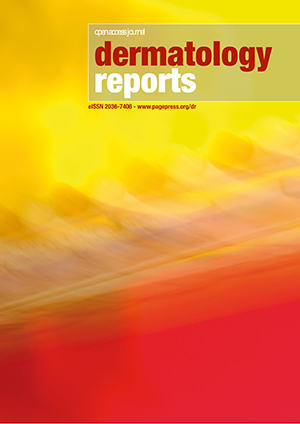Suspect dyskeratotic neoformations in a 7-year-old child with keratitis-ichthyosis-deafness syndrome: diagnostic, surgical and wound care management
All claims expressed in this article are solely those of the authors and do not necessarily represent those of their affiliated organizations, or those of the publisher, the editors and the reviewers. Any product that may be evaluated in this article or claim that may be made by its manufacturer is not guaranteed or endorsed by the publisher.
Authors
Keratitis-ichthyosis-deafness syndrome (KID) is a rare genetic disorder characterized by the triad of hyperkeratosis, ichthyosis, and congenital prelingual sensorineural deafness, with less than 100 cases described in the literature. In addition to many other extra-cutaneous manifestations, these patients are burdened by two principal increased risk factors involving the skin: the risk of developing infections and the risk of developing malignant skin tumors, especially Squamous Cell Carcinoma and Trichilemmal tumors. We present the case of a 7-year-old girl with a unique genetic variant described to date, who developed four dyskeratotic neoformations. Since the dermatoscopic examination was not sufficient to exclude malignancy, excisional and punch biopsies were used. Nonetheless, healing was challenging, with wound dehiscence and infection onset. Ad hoc wound care management resorting to negative pressure therapy and advanced medical honey-based dressings was necessary to achieve complete wound healing.
How to Cite

This work is licensed under a Creative Commons Attribution-NonCommercial 4.0 International License.








